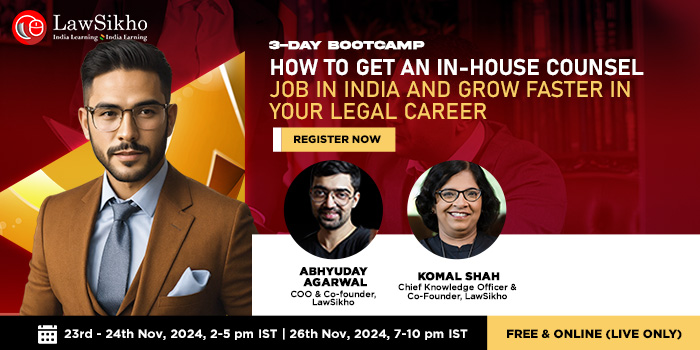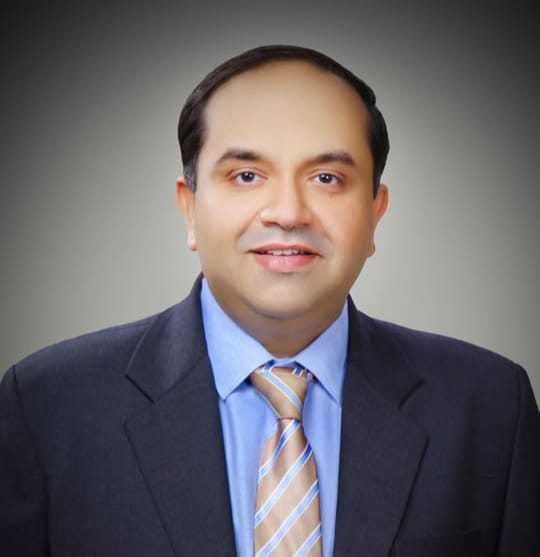This article is written by Sangini Nagpal, pursuing a Diploma in Intellectual Property, Media and Entertainment Laws from Lawsikho.com.
Table of Contents
Introduction
Intellectual property (IP) means creations that a person creates from its intellect i.e. the creations of its mind such as new inventions and developments; art and literature; music; designs; symbols; names and images that are used in trading or commerce. It is given protection in the form of Patents, Copyrights, Trademarks, and Geographical Indications, which enables those people who invent or create the same Recognition and Financial Benefits. In order to flourish creativity and innovation, the IP system tries to maintain the right balance between the innovators and public interest. This paper discusses the prominent types of IP.

Patent
Novartis v. Union of India (2013) 6 SCC 1:
FACTS:
- One of the biggest multinational pharmaceutical firms in 1998, i.e. Novartis International AG submitted an application pursuant to the TRIPS Agreement to the Chennai Indian Patent Office for the award of a patent for an anticancer drug ‘Glivec’ used in the treatment of Chronic Myeloid Leukemia (CML) and Gastrointestinal Stromal Tumors (GIST) discovered in Beta crystalline form ‘Imatinib mesylate.’ This drug is known for its use in cancer treatment and the same is patented in over 35 countries.
- When Novartis applied for a patent, the grant was confined to methods or processes and not to products in India, as defined in section-5 of the Patent Act 1970.
- Section-5 of 2005 was repealed following the Patent (Amendment) Act, and patents were granted for methods or processes but also for products.
- In 2005, Novartis’ patent application for the drug Glivec was taken into account and the same was denied by the Madras Patent Office on the ground that the drug was expected by prior publication and failed to meet the criterion of novelty and non-obviousness, further claiming that the alleged invention was not patentable under section-3(d) of the Patent Act, 1970 as the drug concerned. Patent: Zimmermann.
- Novartis filed two writ petitions in the 2006 Madras High Court pursuant to Article-226 of the Indian Constitution. The appeals subsequently stated that section-3(d) of the Patent Act, 1970 is unconstitutional because it does not comply with the TRIPS agreement and also breaches Article-14 of the Indian Constitution and the other against the Madras Patent Office order. In 2007 Madras High Court transferred the case to IPAB (Appellate Tribunal for Intellectual Property). IPAB finally heard and dismissed this appeal stating that the invention met the tests of novelty and nonobviousness but the product’s patentability was hit by section-3(d) of the Patent Act, 1970.
- IPAB’s decision is to avoid the evergreening of already licensed products by implementing minor modifications and to provide easy access to life-saving drugs for Indian people. After that Novartis filed SLP (Special Leave Petition) against an order passed by IPAB under Article-136 of the Constitution of India in 2009 before the Supreme Court of India.
ISSUE RAISED:
- What is a known substance, as provided for in section-3(d) of the Patent Act, 1970?
- What does Efficacy mean according to section-3(d) of the Patent Act, 1970?
- Under section-3(d) of the Patent Act, 1970 whether the increase in bioavailability qualifies as an increase in therapeutic effectiveness?
- That the Novartis claimed invention “Beta crystalline form of imatinib mesylate” is more productive than the material it originated from i.e. “Imatinib mesylate”?
JUDGEMENT:
In April 2013, Supreme Court of India’s two-judge bench dismissed Novartis’ appeal and upheld that Imatinib Mesylate’s beta-crystalline form is a new form of the known substance, i.e. Imatinib Mesylate, where the effectiveness was well known. The Supreme Court made it crystal clear that in the case of the medication “Efficacy” in section-3(d) implies just “Therapeutic Efficacy” and notes that all properties of the drug are insignificant; its therapeutic efficacy is the properties that specifically contribute to the efficacy of the medication.
In the third issue, the Supreme Court ruled that an increase in bioavailability of approximately 30 percent qualifies as an increase in therapeutic effectiveness under section-3(d) of the Patent Act, 1970 where evidence is provided for the same. The Supreme Court compared the efficacy of “Beta Crystalline form of Imatinib Mesylate” with “Imatinib Mesylate” with reference to its flow properties, improved thermodynamic stability and lower hygroscopicity, and held that none of these properties contribute to an increase in therapeutic efficacy pursuant to Section 3(d) of the Patent Act, 1970 and Novartis did not provide any document demonstrating that the efficacy of Imatinib Mesylate was significantly increased.
CONCLUSION/ANALYSIS:
The Hon’ble Supreme Court’s judgment is to prevent the ever-greening of patented products and to give relief to those who are unable to afford the lifesaving drug as these pharmaceutical companies sell such lifesaving drugs at a very high price which is therefore inexpensive for the common man. In its judgment, the Supreme Court made it clear that India is a developing country and that the availability of cheaper medicines is necessary for the lives of 1 billion people. Section-3(d) of the Patent Act, 1970 prevents those big pharmaceutical companies from obtaining secondary patents by introducing minor changes in existing technology. Novartis failed to prove that the therapeutic efficacy of “Imatinib Mesylate ‘s Beta Crystalline form” is more compared to “Imatinib Mesylate’s therapeutic efficacy.” So Novartis’ application for a patent was dismissed by the Supreme Court.
Trademark
Yahoo!, Inc. v. Akash Arora & Anr. 1999 (19) PTC 201 (Del):
FACTS:
- Yahoo Incorporation is the owner of the well-known trademark Yahoo and the Yahoo.com domain name; both the trademark and the domain name have acquired a distinctive name, goodwill and reputation. Since 1995 Yahoo.com has been registered with Network Solution Inc by Yahoo Inc and provides a whole range of web-based services. The Yahoo trademark was registered in 69 countries, or was close to being registered. Its domain name was not registered in India by Yahoo Inc.
- Akash Arora started providing Web-based services close to those provided by Yahoo.com under the Yahoo India brand. Yahoo Inc. sued Akash Arora for using a trademark that was deceptively similar to its own and passing off its services as Yahoo Inc. had offered.
ISSUE RAISED:
- That Akash Arora ‘s act in registering the domain name Yahoo India, providing services similar to those provided by Yahoo Inc, is a violation of Yahoo Inc’s trademark and amounts to passing-off under the related parts of the Trade and Merchandise Marks Act?
JUDGEMENT:
The principle underlying the transfer action is that no person is entitled to carry on his business in such a way as to give rise to the belief that he is carrying on another man’s business or to lead him to believe that he is carrying on or has any connection with the business carried on by another man. If the two contesting parties are involved in the same or similar line of business, the possibility of confusion and deception is severe and immense and, therefore, the likelihood of damage is present. Both the Plaintiff and the Defendants have a common field of activity in this case.
Plaintiff’s services under the domain name ‘Yahoo! was widely publicized and written worldwide. There can be no two opinions about the two ‘Yahoo’ marks/ domain names! The Defendants’ ‘Plaintiff’ and ‘Yahoo India’ are almost identical except for the use of the ‘India’ suffix in the latter. There is every possibility and likelihood of confusion and deception being caused and an Internet user may be confused and deceived in believing that both the domain names belong to one common source and connection, though they are not.
The defense of the defendants is found to be of no merit and therefore an ad interim injunction is passed in favour of the plaintiff restraining the defendants from doing business or selling, offering for sale, advertising and/or dealing in services or goods on the Internet or under the trademark/domain name ‘Yahoo India’ ‘Until the suit is disposed of. The defendants are also further prohibited from copying the contents of the plaintiff’s programs under the domain name ‘Yahoo.com.’
CONCLUSION/ANALYSIS:
Yahoo Inc. contended that Akash Arora adopted Yahoo’s domain name to offer services similar to those of Yahoo Inc. and tried to cash in on the goodwill generated by Yahoo Inc. because there was every possibility of confusing and deceiving an Internet user, believing that Yahoo and Yahoo India belonged to Yahoo Inc. Hence, Yahoo Inc. has argued that Akash is liable to move off. As the two ‘Yahoo’ trademarks/ domain names! ‘Moreover,’ Yahoo India! ‘The services provided by the latter were almost identical and identical to those provided by the former, and as the latter passed them off as offered by Yahoo Inc., the court held Akash responsible for passing off and barred him from using the deceptively similar domain name. In this case, the court’s decision is based on the reasoning that where the value of a name lies solely in its resemblance to another organization’s name or trademark, the public is likely to be deceived by the use of that name and such an act would amount to passing away.
Copyright
Anand v. Delux Films and Ors. AIR 1978 SC 1613:
FACTS:
The complainant had been the author of a play called Hum Hindustani. In 1954 defendant Mohan Sehgal sent the complainant a letter expressing his desire to make a play-based film. The plaintiff and the defendant got together and discussed the whole play. The defendant committed nothing, but later the plaintiff came to know that the defendant released a film titled New Delhi. The plaintiff was of the opinion after seeing the film that it is based on the story of his career. But he filed a claim seeking permanent injunction and damages against the defendant. Upon a finding of the truth both the District Court and the High Court ruled against the appellant. The case ended up reaching SCI.
ISSUES RAISED:
- Whether the film was a colorful imitation or a material copy of the play?
- Whether a person’s name can also be copyrighted in a copyrightable subject matter?
JUDGEMENT:
The SC held that ‘there exists no copyright in relation to an idea, subject-matter themes, plots, or historical or legendary facts. Infringement is restricted only to the form, manner, arrangement, and expression of the idea by the author of the copyrighted work.’ The court should further settle on similarities whether they are substantial or fundamental in nature and not w.r.t. the mode of expression adopted in the work. If the substantial or fundamental expression has been copied then the same would amount to infringement. The other test that is reliable to ascertain whether there is an infringement or not is to analyze the impression created on the spectator or reader subsequent to reading or watching the work. The said test is known as ‘Lay Observer Test.’
CONCLUSION:
The Supreme Court’s ruling that the film cannot be treated as a violation of the play’s script. The reason it gave was that although the idea behind the two stories was the same, the way in which both had been expressed differed greatly from each other. Hence, it cannot be held to be an infringement of copyright.
Geographical Indications (GI)
India-US Basmati Rice Dispute:
FACTS:
- Originally from India and Pakistan, after RiceTec, a Texas-based company, patented some rice types they developed as “American basmati,” Basmati became a controversial ‘issue’ in 1997.
- RiceTec Inc, with brands like “Kasmati” and “Texmati,” tried to reach the international Basmati market. The company ultimately claimed to have developed a new strain of aromatic rice by interbreeding basmati with a different variety. They sought to call the variety allegedly new as Texmati or American Basmati.
- On 2 September 1997, RiceTec Inc., granted the patent number 5663484 on Basmati rice lines and grains.
- Two Indian NGOs — Center for Food Protection, an international non-governmental group working against biopiracy, and the Research Foundation for Science, Technology and Ecology, an Indian environmental NGO that filed legal petitions in the United States, objected. It was also objected to by the Centre for Science and Industrial Research.
- They were seeking trade protection for Thailand’s Indian subcontinent basmati rice and jasmine rice. They called for U.S. rice standards to be amended to specify that the term “basmati” can only be used for rice grown in India and Pakistan, and for Thai rice jasmine.
- The Indian government officially challenged the patent in June 2000, after compiling the evidence.
ISSUES RAISED:
- Whether the word ‘basmati’ is a generic term for aromatic rice, or does it explicitly refer to the long aromatic rice cultivated in India and Pakistan?
- Whether the strain that RiceTec is developing is a novelty?
- Whether RiceTec is to blame for biopiracy?
- Whether the decision by the US government to grant a patent for the prized Basmati rice infringes the International Trade Related Intellectual Property Rights Treaty (TRIPS)?
- Whether the basmati patent should be repealed in the light of Indian protests?
JUDGEMENT/ CONCLUSION/ ANALYSIS:
Basmati rice is cultivated exclusively in the Indian subcontinent, and India is the world’s largest exporter of Basmati. The Indian government had been involved in a bitter patent war with the U.S.PTO over patent granting Basmati rice to a U.S. Corporation -RiceTec. Although the Indian government succeeded in revoking the patents covering Indian Basmati, it could not prevent the United States from doing so. Business uses the ‘Texmati’ name which is identical to ‘Basmati’ deceptively. The Indian public has learned a lesson from this past experience and therefore an attempt was made by the Export Development Authority for Agricultural and Processed Food Products (‘APEDA’) to protect Basmati rice as a GI for the regions where it is grown in India.
This APEDA attempt was met with strong resistance from the state of Madhya Pradesh and the Association of Basmati Growers, Pakistan. The State of Madhya Pradesh filed an opposition on the grounds that the Basmati Application as a GI had excluded 13 Madhya Pradesh (M.P.) territories where Basmati rice is grown. It was asserted that this exclusion would hamper the interests of those regions’ farmers. IPAB took this plea from the State of M.P into consideration and claimed that the application of APEDA should be reconsidered with a view to the inclusion of M.P regions among those regions enjoying protection under the GI Act.
The Basmati Growers Association, Pakistan (BGA) application claimed that Basmati rice was grown in India as well as in Pakistan. It is relevant to mention that the Basmati Growers Association suffered an order of refusal from the Trade Marks Registrar, Pakistan to register BASMATI as a collective mark. The IPAB Bench rejected BGA ‘s appeal, as there was no reason for them to intervene and interfere in the proceedings initiated by APEDA to obtain GI Tag for BASMATI rice covering areas within the Indian territory. In addition, the Bench was of the opinion that BGA did not take any steps to substantiate its claim regarding BASMATI in its own country, Pakistan. Accordingly, the application of APEDA was allowed, and the opposition appeals were rejected.

Trade Secrets
The Coca-Cola Case:
FACTS:
- Coca-Cola with a brand value of $56 billion, according to Forbes Magazine is the fourth most valuable brand in the world and is one of the world’s best-selling carbonated soft drink beverage companies. It was Asa Griggs Candler, whose innovative ideas and marketing tactics led Coca-Cola to dominate the world’s beverage industries throughout the 20th century and beyond. This company’s entire industry has built around its exclusive recipe. Thus the company has made great efforts to keep this recipe a secret and until now it is one of the business world’s tightly guarded and best-kept secrets.
- The Secret Formula for Coca-Cola is the lifeblood of their business. Instead of using patent legislation to protect its business interests, the Coca-Cola Company opted for trade secret protection and decided to keep its product recycling as a secret to safeguard its advantage over other competitors. And this visionary idea changed the company’s fortunes in a way that very few at the time could have expected.
- The Coca-Cola Company has put much effort into keeping the formula a secret. One rumour is that only two Coca-Cola executives know the secret formula of the beverage at one time but each knows only half, and they are never allowed to travel on the same plane. While the Coca-Cola Company hasn’t disclosed the number of people who know their secret recipe but keeping in mind the volume of production they produce, it’s impossible that only two people will learn this secret at once.
- The formula was discussed with only a select group from the start, and was never written down. It was only when Candler and his family bought the company from Ernest Woodruff and a group of investors in 1919 that Woodruff demanded that Candler’s son write down the formula so that he could use it as leverage for a loan agreement. The written formulation was put in the vault of the Guaranty Bank in New York before the loan was reimbursed. Coca-Cola then placed the elusive formula into a vault at SunTrust Bank in 1925. And in December 2011, the vault was moved to World of Coca-Cola at Atlanta on the occasion of its 125th anniversary, where it can be viewed by the public in a permanent exhibit. But also faced a lot of challenges in keeping this secret Coca-Cola Company. In 1977, Coca-Cola decided to stop its production in India when it was forced to reveal its formula and partner with an Indian company under the Indian Foreign Exchange Regulation Act (FERA). It only returned when, after an absence of 17 long years, India agreed to change its strategy.
- The biggest controversy was when some of its employees attempted to sell their secrets to their rival company PepsiCo in 2006. Luckily PepsiCo immediately notified Coca-Cola of the infringement and later reported this to the FBI as well.
- PepsiCo received a letter from an individual named ‘Drik’ in an official Coca-Cola envelope where Drik mentioned that he has very detailed and confidential information about a new Coca-Cola product and is prepared to trade for it.
ISSUE RAISED:
- Whether selling the secret formula of Coca-Cola by some of its employees amounts to infringement of trade secrets?
JUDGEMENT:
- The FBI arrested three people connected to the leak of trade secrets after investigation. Ibrahim Dimson, Edmund Duhaney and Joya Williams have been arrested for this incident, and charged.
- When looking for classified details, Williams was caught in video surveillance and also caught placing a new Coca-Cola product sample into her purse, which was later checked by the authority as a legitimate prototype product under production.
- Joya Williams was sentenced to eight years in prison while Ibrahim Dimson was sentenced to five years in prison and the third defendant, Edmund Duhaney was sentenced to two years in prison for planning to steal the Coca-Cola Co. trade secrets and to sell them to rival PepsiCo Inc.
Students of Lawsikho courses regularly produce writing assignments and work on practical exercises as a part of their coursework and develop themselves in real-life practical skill.
LawSikho has created a telegram group for exchanging legal knowledge, referrals and various opportunities. You can click on this link and join:















